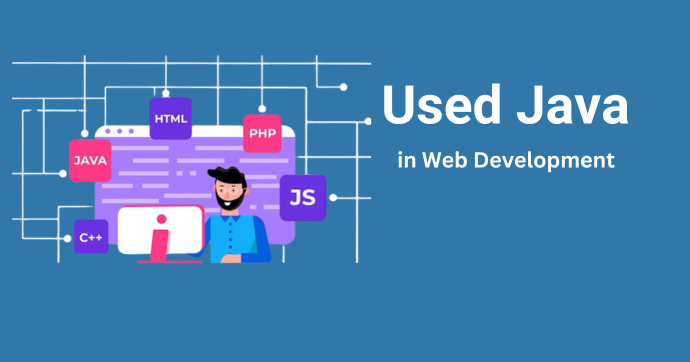Java is a cornerstone of website development, renowned for its robustness, scalability, and versatility. As a programming language that has been around for decades, Java has evolved and adapted to meet the demands of modern web applications. This article delves into how Java is employed in web development, examining its key frameworks, tools, and the diverse applications it supports.
The Significance of Java in Web Development
Java’s importance in software development stems from its ability to deliver cross-platform solutions and its strong performance in handling complex tasks. The language’s platform independence, ensured by the java virtual machine (JVM), means that Java applications can run seamlessly on any system that supports the JVM. This characteristic makes Java particularly attractive for web applications that need to function across various operating systems and devices.

Exploring Java Frameworks
Java frameworks are essential tools that streamline and enhance the development process. These frameworks offer pre-built structures and components, allowing developers to build robust applications more efficiently. It is renowned for its comprehensive approach to application development, providing a wide array of features including dependency injection, aspect-oriented programming, and transaction management. Spring’s flexibility allows developers to create scalable and maintainable web applications, making it a preferred choice for many organizations.
Understanding Java Web Technologies
Each of these technologies plays a unique role in the development process. Let’s explore the key types of Java web technologies and understand their functions in web application development.
Servlet API
The Servlet API is a crucial component in java development services. It allows developers to create Java programs known as servlets that run on a web server. Servlets are used to handle requests from clients, process them, and generate responses. This technology provides a way to extend the capabilities of servers that host applications accessed by means of a request-response programming model.
JSP (JavaServer Pages)
JavaServer Pages (JSP) is another fundamental technology for building web applications in Java. This integration allows for the dynamic generation of web content. With JSP, you can create web pages that are generated on the server side, making it possible to create interactive and dynamic web applications.
JDBC Driver
JDBC (Java Database Connectivity) is a Java-based API that allows Java applications to interact with databases. The JDBC Driver plays a vital role in this process by providing the necessary interface between the Java application and the database. It enables Java programs to execute SQL queries, update database tables, and retrieve data.
Java Persistence
Java Persistence is a technology that deals with the management of relational data in Java applications. It provides a framework for mapping Java objects to database tables and vice versa. This technology simplifies the process of database interactions by allowing developers to work with high-level Java objects rather than dealing directly with SQL queries.
JavaServer Faces (JSF)
JavaServer Faces (JSF) is a Java standard designed to create component-based user interfaces for web applications. JSF simplifies the development of web applications by providing a set of reusable UI components. Developers can use JSF to create complex user interfaces with minimal code, as it manages the UI state and handles user interactions.
JSTL
JSTL (JavaServer Pages Standard Tag Library) is a collection of custom tags that simplify the development of JSP pages. JSTL provides a set of standard tags for common tasks such as iteration, conditionals, and formatting. By using JSTL, developers can write cleaner and more maintainable JSP code.
Java Message Service API
Java Message Service (JMS) API is a Java API that allows applications to create, send, receive, and read messages. It provides a way for Java applications to communicate asynchronously, which is crucial for building scalable and reliable distributed systems.
Another significant framework is Hibernate, which specializes in object-relational mapping (ORM). Hibernate simplifies the interaction between Java applications and databases by allowing developers to work with Java objects rather than database tables. This abstraction layer reduces the complexity of database operations and enhances productivity.
Essential Tools for Java Web Development
In addition to frameworks, several tools are integral to Java website development. These tools support various stages of the development lifecycle, from coding to deployment, and help developers manage and streamline their workflows.
Integrated Development Environments (IDEs) like Eclipse and IntelliJ IDEA are pivotal in Java development. These IDEs offer a range of features including code completion, debugging, and testing tools. They provide an organized and efficient workspace that facilitates coding and troubleshooting, ultimately accelerating the development process.
Build tools such as Apache Maven and Gradle are also critical in Java software development. Maven is known for its ability to manage project dependencies and automate the build process. It provides a standardized project structure and integrates with various plugins to support different aspects of development. Gradle, on the other hand, is appreciated for its flexibility and performance.
Applications of Java in Development
Java’s versatility extends to a broad spectrum of development applications. Its robustness and scalability make it suitable for building a wide range of web-based solutions, from simple websites to complex enterprise systems.
Many software development companies leverage Java for creating high-performance, enterprise-level applications. Java’s ability to handle large volumes of data and integrate with various technologies ensures that it remains a top choice for complex projects. For instance, Java is often used in developing e-commerce platforms, which require reliable and scalable solutions to manage transactions, user accounts, and inventory.
Content management systems (CMS) and online banking solutions are other areas where Java excels. A CMS built with Java can offer high performance, security, and flexibility, allowing organizations to manage and publish content efficiently. Similarly, online banking systems benefit from Java’s robust security features and ability to handle sensitive financial transactions.
Conclusion
Java’s role in software development is expansive and multifaceted. Its frameworks provide the foundational structures needed for building scalable and efficient applications, while its tools support various aspects of the development lifecycle. The diverse applications of Java, from enterprise systems to consumer-facing platforms, underscore its enduring significance in the field of development. Java continues to be a valuable asset for software development companies, ensuring that it remains a prominent choice for developers around the world.
To learn more about Software Development, we recommend that you read this-: Offshore Software Development: Top 8 Benefits








